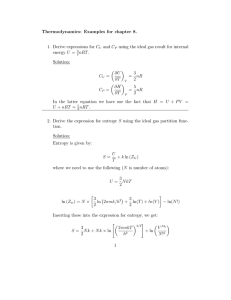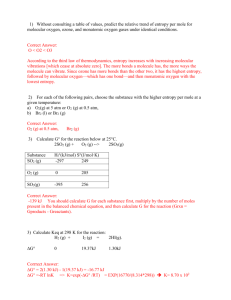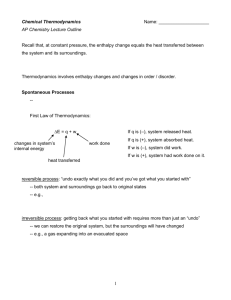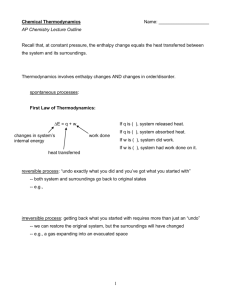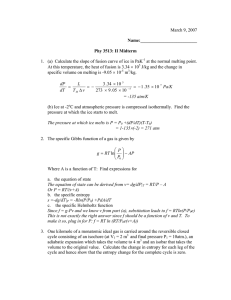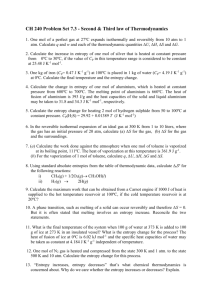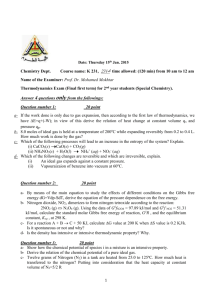Interpretation of the 2nd Law of Thermodynamics
advertisement
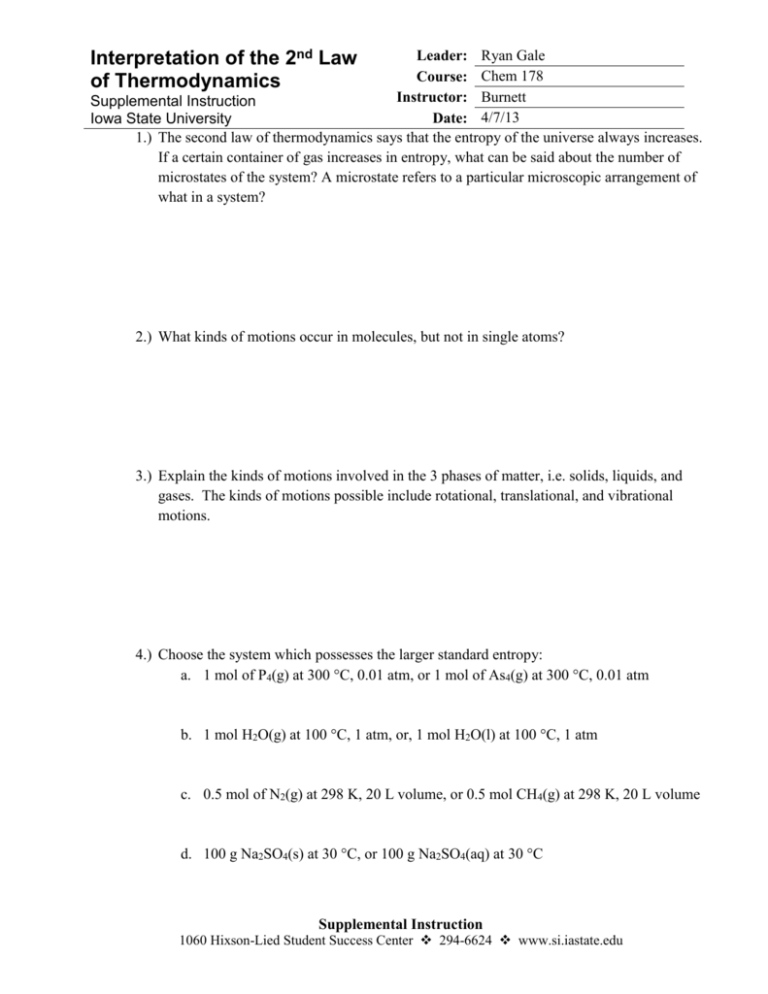
Interpretation of the 2nd Law of Thermodynamics Leader: Ryan Gale Course: Chem 178 Instructor: Burnett Supplemental Instruction Date: 4/7/13 Iowa State University 1.) The second law of thermodynamics says that the entropy of the universe always increases. If a certain container of gas increases in entropy, what can be said about the number of microstates of the system? A microstate refers to a particular microscopic arrangement of what in a system? 2.) What kinds of motions occur in molecules, but not in single atoms? 3.) Explain the kinds of motions involved in the 3 phases of matter, i.e. solids, liquids, and gases. The kinds of motions possible include rotational, translational, and vibrational motions. 4.) Choose the system which possesses the larger standard entropy: a. 1 mol of P4(g) at 300 °C, 0.01 atm, or 1 mol of As4(g) at 300 °C, 0.01 atm b. 1 mol H2O(g) at 100 °C, 1 atm, or, 1 mol H2O(l) at 100 °C, 1 atm c. 0.5 mol of N2(g) at 298 K, 20 L volume, or 0.5 mol CH4(g) at 298 K, 20 L volume d. 100 g Na2SO4(s) at 30 °C, or 100 g Na2SO4(aq) at 30 °C Supplemental Instruction 1060 Hixson-Lied Student Success Center 294-6624 www.si.iastate.edu 5.) What happens to the entropy of matter as temperature decreases? a. Do you think entropy of the system, obeying the 2nd law of thermodynamics, could be reduced to 0? If so, how? 6.) For any chemical reaction, the change in entropy at standard state can be calculated by: ∆𝑆 ° = ∑ 𝑛 𝑆 ° (𝑝𝑟𝑜𝑑𝑢𝑐𝑡𝑠) − ∑ 𝑚 𝑆 ° (𝑟𝑒𝑎𝑐𝑡𝑎𝑛𝑡𝑠) Where n = moles of products, m = moles of reactants Calculate ∆𝑆 ° for the following chemical reactions, and also explain the sign of ∆𝑆 ° : 𝐽 𝑆 ° 𝑚𝑜𝑙∗𝑘: HNO3(g) = 266.4, NH3(g) = 192.5, NH4NO3(s) = 151, C2H6(g) = 229.5, C6H6(l) = 172.8, Fe2O3(s) = 89.96 a. HNO3(g) + NH3(g) → NH4NO3(s) b. 3 C2H6(g) → C6H6(l) + 6 H2(g) c. 2 Fe2O3(s) → 4 Fe(s) + 3 O2(g)

